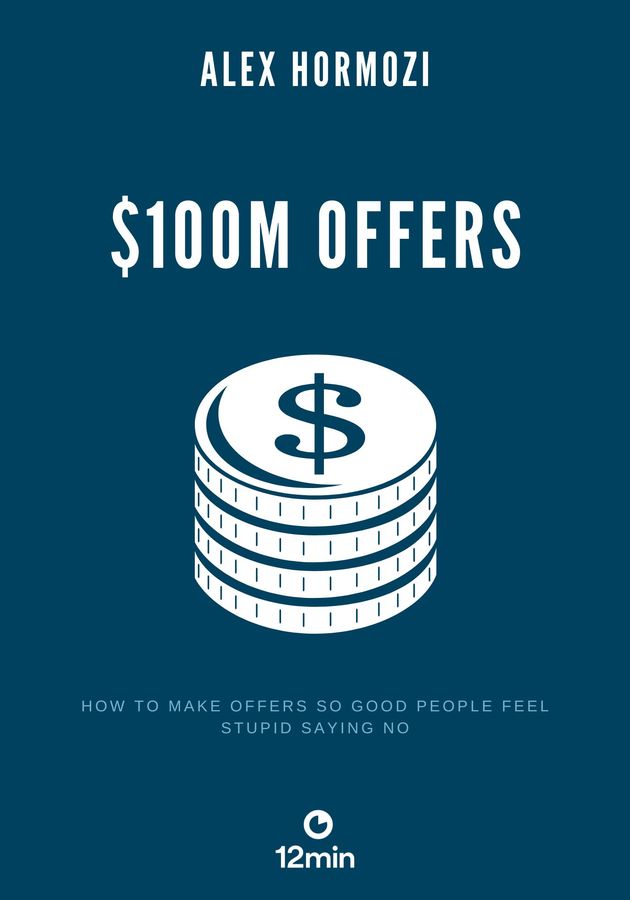One of the core beliefs of Jim Kwik, a world-renowned expert in brain optimization, is that human potential is the only infinite resource we have in this world. “Most everything else is finite,” he writes in “Limitless,” his debut book, “but the human mind is the ultimate superpower – there is no limit to our creativity, imagination, determination, or ability to think, reason, or learn.” Unfortunately, he laments just after, “this resource is also among the least tapped.”
That’s where “Limitless” comes in. Combining cutting-edge research with practical techniques, the book aims to help you accomplish more in your life, by changing your mindset, motivation and methods. There is a superhero sleeping in all of us, claims Kwik, and it’s your job to unleash it. Get ready to learn how!
The boy with the broken brain
Growing up in New York City’s Westchester County (that is, not far from the imaginary location of Charles Xavier’s School for Gifted Youngsters) Jim Kwik was obsessed with superheroes. That’s why he was particularly excited when, one day, a fire truck with its siren on stopped in the vicinity of his kindergarten. For Kwik, both back then and nowadays, firefighters are “the closest thing to real-life superheroes” humanity has.
Just like all other children, Kwik immediately grabbed his chair, pushed it against the radiator running along the bottom of the window, and got up on it. Moments later, as he was admiring the courageous heroes in action, one of the other kids from the class grabbed the chair from beneath him. This caused Kwik to lose balance and he went flying headfirst into the radiator. The injury was so severe that he was immediately rushed to the hospital. The doctors were candid with his mother: there was a real possibility of long-term side effects.
Indeed, it didn’t take long for his mother to notice some of them. Before the injury, Kwik was “an energized, confident, and curious child.” After it, he became “noticeably shut down.” Moreover, he started losing focus and concentration, and had real difficulties learning anything new. As a result, school became an ordeal for him. Not able to make any sense of either letters or numbers, he was bullied and made fun of by other children. Even worse, he was scolded by his teachers as well. One day, frustrated with Kwik’s inability to concentrate, a particularly insensitive teacher pointed at him and said, “That’s the boy with the broken brain.” As Kwik would learn years later, she could have directed those words at just about anyone in the classroom and she would have been right. But not for reasons one would expect.
The limitless model
Despite all the troubles and setbacks, Kwik managed to get into a local university. Already as a freshman he realized higher education just wasn’t for him. Even though he “practically lived at the library,” he was doing even worse in his college classes than he did in high school. He was just about to quit school altogether when he passed out from exhaustion in the library one day and fell down a flight of stairs, sustaining yet another head injury. “There has to be a better way” was one of the first thoughts that came into his “broken brain” when he woke up two days later in a hospital bed.
It’s there that he finally got to the root of his issue. It wasn’t his injury that had broken his brain – it was society. All his life, he realized, people had been telling him what to learn, but nobody had ever told him how to learn it. As a result, he was trying to solve his problems by working harder. But what if, he thought, what if he could teach himself to work better? What if he could find a way to learn that was more efficient, more effective, and even more enjoyable than all the other methods out there? What if, in a word, he could become a superhero?
Kwik spent the following few years learning how to learn. Eventually, he realized that what had been holding him back throughout his life was himself or, more precisely, his perceived restrictions. He was, in other words, convinced that his childhood injury had compromised his future and that he couldn’t progress beyond that biological obstacle. Not long after he started thinking differently, he began seeing all his perceived restrictions for what they really were: temporary obstacles. It was then that he started “unlimiting,” expanding his mindset, motivation and methods. These three are the foundation of Kwik’s three-part model of success, the Limitless Model. So, let’s delve deeper into each one.
Limitless mindset: the what
The first element of the Limitless Model is mindset, namely, “the mental attitude or disposition that predetermines a person’s responses to and interpretations of situations.” You are not born with your mindset – that is, you are not born with the beliefs, attitudes, and assumptions you currently have. You have picked all of them up along the way in your life. Unfortunately, if you are like most people, many of these ideas define you as “something less than what you truly have the potential to achieve.” Rather than helping you grow, they hinder your growth. That’s why Kwik calls them LIEs, that is Limited Ideas Entertained. The first step toward acquiring a limitless mindset is identifying the seven most common LIEs:
- Intelligence is fixed. Even though most people would define an IQ score as a fixed reflection of their intelligence, the quotient is nothing more but an approximation of one’s academic capabilities at a given time. There are, in reality, multiple types of intelligence, and most can’t be measured by any test. Intelligence is actually fluid and is dependent on context.
- We use only 10% of our brains. This myth is as false as it is prevalent. If we didn’t use 100% of our brains, then we could sustain many types of brain injuries without experiencing side effects. This is, of course, not true. Studies have shown that “there is no single area of the brain that can sustain damage without a loss of ability.” The goal is not to use more of your brain, but to use your brain as effectively as you possibly can.
- Mistakes are failures. The best way to learn anything is through trial and error. In other words, as the phrase itself suggests, mistakes are part of the learning process, not its opposite. “There is no such thing as failure,” comments Kwik, “only failure to learn.”
- Knowledge is power. Thomas Hobbes said that in the 17th century. However, he also said that as much as knowledge is important, what makes it powerful is “the performing of some action” with its help. In other words, the correct equation isn’t knowledge = power, but knowledge + action = power.
- Learning new things is very difficult. It’s impossible to eat your soup with a fork; conversely, a spoon makes the process the easiest thing in the world. Just like everything else, learning is a set of tools and methods. Learning new things can be difficult, but only if you’re learning them in the wrong manner.
- The criticism of other people matters. By taking into consideration other people’s opinions and expectations, you are merely adding lies to the ones that are already limiting your potential. It’s not anyone’s job to like, love, or respect you – but yours.
- Genius is born. Rather than born, genius is made. “Through deep practice, ignition, and master coaching,” writes Kwik, “anyone can develop a talent so deep that it looks like genius.”
Limitless motivation: the why
Dictionaries define motivation as “the energy required for someone to behave in a particular way.” However, contrary to common belief, motivation is not really something you have, but something you do. According to Kwik, you can create personal motivation every day for yourself by following this simple recipe: M = P × E × S3. In translation, “when you combine purpose (P), energy (E), and small simple steps (S3), you get sustainable motivation.” Let’s break down the equation further:
- Purpose. Purpose is not the same as passion – in fact, it is its ultimate result. Whereas passion is the thing that lights you up inside, purpose is how you use this flame, how you share it with the world. So, think about what you want to share with other people and why you want to do that. Unless you start with your why, you will never get anywhere in life.
- Energy. Merely having a clear purpose for doing something isn’t enough, if you don’t have energy to fuel your actions. Generating limitless brain energy starts with a good brain diet. According to neuroscientist and integrative nutritionist Lisa Musconi, the top 10 brain foods are avocados, blueberries, broccoli, dark chocolate, eggs, green leafy vegetables, salmon, turmeric, walnuts and water. Food is, however, not enough. You need exercise and good, high-quality sleep too: both improve the memory and your decision-making capabilities. Finally, you should also start talking back to the voices in your head that are telling you what you can’t do. Kwik calls them ANTs – or, “automatic negative thoughts” – for two reasons: they are everywhere and can be squashed.
- Small simple steps. A small simple step is “the tiniest action you can take to get you closer to your goal.” Repeated small simple steps lead to habits, and good habits lead to success. Kwik suggests using his WIN strategy to turn a desired behavior into a habit via small simple steps. First, you need to make sure you really want the change, then, you must align it well with your innate abilities, and finally, you must start performing this new habit now.
The ultimate form of motivation is flow, defined by psychologist Mihaly Csikszentmihalyi as “the state in which people are so involved in an activity that nothing else seems to matter; the experience itself is so enjoyable that people will do it even at great cost, for the sheer sake of doing it.” To get yourself in a state of flow more often, try to give yourself enough time with an activity you love, set before yourself a clear, slightly challenging goal and eliminate all distractions. Whatever you do, however, don’t stress or multitask, and leave your fears and doubts at the door – they are the four enemies of flow.
Limitless methods: the how
Neither productive mindsets nor optimal levels of motivation differentiate limitless people from the rest of us. What sets them apart is the third M, the how of it all: methods. Methods are nothing more than “procedures or processes for accomplishing something.” Here are a few of them, compiled and developed by Kwik that should help you master the five vital learning areas:
- Focus. Our minds nowadays are incredibly busy and scattered. Focus, however, requires calmness and attentiveness by definition. Meditation, yoga, and certain martial arts can be tremendously valuable in helping you achieve this state. The same holds true for mindful breathing and the practice of scheduling time for distractions.
- Study. There are several simple habits that can help you unlimit your studies. The best one is probably employing active recall, that is, reviewing the material you’ve studied soon after by reciting it out loud with a closed book. Listening to baroque music can be just as valuable, as it has been shown to stabilize mental, physical and emotional rhythms, leading to a state of deep concentration. Applying the HEAR method – halt, empathize, anticipate, and review – can help you listen to a talk with your whole brain. Finally, taking notes using the TIP strategy – think, identify, and prioritize – will considerably improve your retention.
- Memory. “Memory is arguably the most important part of the learning process,” says Kwik. “If you could not remember, then you could not learn anything.” To remember better, try to rely on MOM, a mnemonic device Kwik has created to instantly improve your memory. The first M in the acronym stands for motivation: since “you are overwhelmingly more likely to remember something when you have a strong motivation to do so,” try to make remembering personal. The O is for observation: most of the time, when you fail to remember something, the issue isn’t retention but rather attention. So, be careful. Finally, the last M is for Methods. The best one is to create vivid visualizations that include attractive associations, emotions and locations.
- Speed reading. The average person’s reading speed is somewhere between 150 to 250 words per minute. But you can read at least twice as fast as that if you stop subvocalizing and back-skipping while you read, and try to expand your peripheral vision, while using your finger to guide you across and down the lines of the paragraph.
- Thinking. Most of us get stuck in decision-making or problem-solving because we limit ourselves to one way of thinking. To think better, try separating your thinking modes using Edward de Bono’s six metaphorical thinking hats whenever you’re faced with a dilemma. First, put on the white hat to gather information. Next, switch to the yellow one to bring optimism to your thinking. Use the black hat to delve into the problem’s difficulties and, subsequently, the red hat to let your feelings about the problem come to the surface. Next to last, the green hat should help you tackle the problem creatively. Finally, put yourself into management mode by donning the black hat so that you can discern whether you’ve gone through the entire hat-switching process properly.
Final notes
In the 2011 book-based movie titled “Limitless,” a nootropic drug called NZT-48 gives the main character, played by Bradley Cooper, the ability to fully utilize his brain. In Jim Kwik’s same-titled book, the drug is a three-part method that is not only more realistic but also shows greater potential.
True, the book can be better described as a simply structured collection of existing methods rather than an original system, and true, it’s full of acronyms and mnemonic devices, but as far as self-help compendiums go, “Limitless” is right up there with the best of them.
12min tip
Use the FASTER method to learn faster. F is for forgetting distractions. A is for making learning an active, rather than passive, experience. S is for taking control of your state of mind. T is for learning with the intention of teaching the information to someone else. E is for entering your learning sessions into your calendar. Finally, R is for a daily review of what you’ve learned.




























